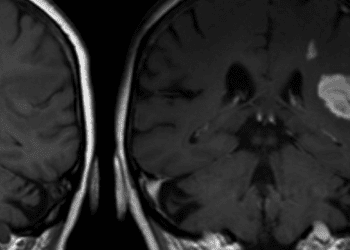Association between age at onset of multimorbidity and incidence of dementia:
1. Earlier onset and severity of multimorbidity, the presence of more than 2-3 chronic disease conditions, was strongly associated with increased risk of subsequent dementia and death.
Evidence Rating Level: 1 (Excellent)
With an increasing life expectancy for adults in many high income countries, there has been a corresponding increase in the prevalence of major neurocognitive disorders. The presence of multimorbidity is associated with a higher risk of dementia, however, few studies have investigated the longitudinal effects of early onset and severity of multimorbidity on future development of dementia. This prospective cohort study recruited 10,095 participants aged 35 to 55 to examine the association between multimorbidity, age of onset, and subsequent dementia at four to five-year follow-up across a 30-year duration. Multimorbidity was defined as the presence of two or more chronic disease conditions from a predefined list, and the primary and secondary outcomes of this study were all-cause dementia and mortality, respectively. It was found that participants with a younger age of onset of multimorbidity had a greater risk of developing subsequent dementia than same-age peers, as did participants with increased severity, defined as three or more comorbid chronic diseases. Additionally, comorbid Parkinson’s disease and depression were found to have the highest hazard ratios in the development of subsequent dementia. These findings raise interesting implications for early disease prevention, detection and counseling patients about modifiable risk factors in order to prevent major neurocognitive decline.
Click here to read the study in BMJ
Relevant Reading: Multimorbidity burden and dementia risk in older adults: The role of inflammation and genetics
In-Depth [Prospective cohort study]: This study included patients from a large prospective cohort, Whitehall II, which recruited adult British participants between the years of 1985-88. Data was linked to UK National Health Service (NHS) electronic health records for 99.9% of patients. Within this population, a list of 13 chronic conditions was selected from previous research on multimorbidity, including coronary heart disease, stroke, heart failure, diabetes, hypertension, cancer, chronic kidney disease, chronic obstructive pulmonary disease, liver disease, depression, mental disorders other than depression, Parkinson’s disease and arthritis. Within this population, death occurred in 904 participants prior to target age (70) and 639 cases of dementia occurred over a median follow-up of 31.7 years. Multimorbidity was present in 6.6% of participants (n=655/9937) at age 55 and 31.7% at age 70 (n=2464/7783), while the most common comorbid conditions were hypertension, coronary artery disease and depression. When compared with people without any chronic conditions, multimorbidity at age 55 was associated with a higher incidence rate (difference 1.56 [95% CI 0.62 to 2.77]) and a hazard ratio of subsequent dementia of 2.44 (1.82 to 3.26). Furthermore, in individuals with a younger age of onset of multimorbidity, there was a higher risk of dementia at ages 60, 65 and 70 when compared with same-age peers (p<0.001 for all). At age 65, onset of multimorbidity before age 55 was associated with 3.86 (1.80 to 6.52) per 1000 person years higher incidence of dementia (hazard ratio 2.46, 1.80 to 2.26) while onset between 60 and 65 was associated with 1.85 (0.64 to 3.39) per 1000 person years higher incidence (1.51, 1.16 to 1.97). Additionally, increased severity of multimorbidity (≥3 chronic diseases) at age 55 had a 5.22 (1.14 to 11.95) per 1000 person years higher incidence of dementia (hazard ratio 4.96, 2.54 to 9.67). At age 70, these analyses demonstrated a 4.49 (2.33 to 7.19) per 1000 person years higher incidence (1.65, 1.25 to 2.18). In terms of associations between dementia and various dyads of chronic diseases, the presence of both Parkinson’s disease and depression were found to have the highest hazard ratio (10.28, 5.94 to 17.79). Parkinson’s disease and mental disorders also demonstrated the highest individual hazard ratios for development of dementia (8.16, 5.68 to 11.73, and 13.51, 6.53 to 27.95, respectively). Finally, in terms of the secondary outcome of this study, multimorbidity at ages 55, 60, 65 and 70 was associated with mortality, particularly at younger ages of onset of multimorbidity (p<0.001).
Image: PD
©2022 2 Minute Medicine, Inc. All rights reserved. No works may be reproduced without expressed written consent from 2 Minute Medicine, Inc. Inquire about licensing here. No article should be construed as medical advice and is not intended as such by the authors or by 2 Minute Medicine, Inc.







